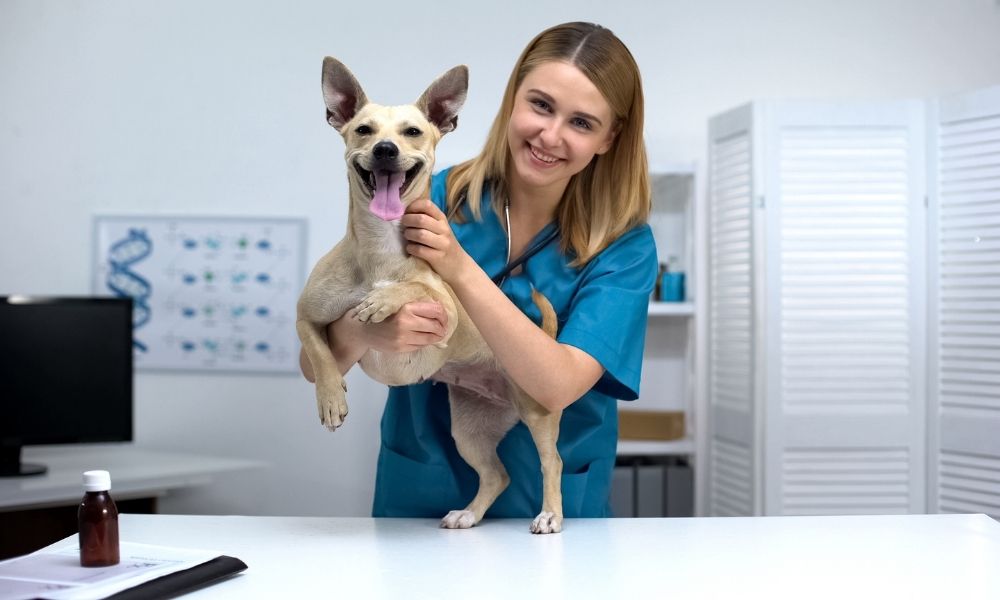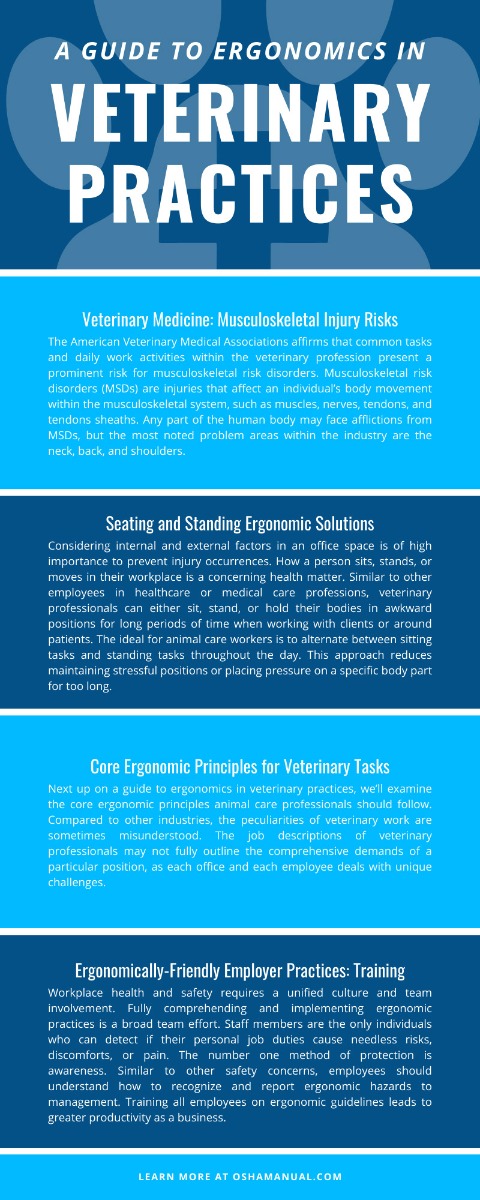
Ergonomics is a working science that fits a specific workplace, system, or environment to an employee’s needs. In broad terms, ergonomics speaks to how people interact with an artificial environment most efficiently. The Occupational Health and Safety Administration (OSHA) enforces a set of criteria of workplace regulations that present-day employers must comply with for the health and safety of their employees. Federal OSHA does not have specific regulations regarding ergonomics (California OSHA or Cal/OSHA does), but maintains that all ergonomic injuries fall under the General Duty Clause. Ergo, ergonomics is a major concern for all employers and employees under OSHA.
Ergonomics holds a tremendous impact on the efficiency of an individual’s workday. The ultimate impact depends on the tasks involved within a person's job role. Poor ergonomic setups are the main contributors to workplace injuries. Poor ergonomics also cause other acute injuries to develop down the line due to recurrent stressors. In sum, this type of prolonged exposure causes numerous health issues that are preventable with the right techniques and practices.
Within the veterinary field, office or hospital workers face physical demands every day on the job. Employers must deal with multi-faceted concerns about overall employee well-being. The implications of these physical demands are often not felt until daily aches, pains, and worries come about. Ergonomic program planning is one low-hanging safety fruit employers should reach for to improve veterinary workplace safety. Let’s closely examine how you can best prevent employee injuries and increase productivity. Here’s a guide to ergonomics in veterinary practices.
Veterinary Medicine: Musculoskeletal Injury Risks
The American Veterinary Medical Associations affirms that common tasks and daily work activities within the veterinary profession present a prominent risk for musculoskeletal risk disorders. Musculoskeletal risk disorders (MSDs) are injuries that affect an individual’s body movement within the musculoskeletal system, such as muscles, nerves, tendons, and tendons sheaths. Any part of the human body may face afflictions from MSDs, but the most noted problem areas within the industry are the neck, back, and shoulders.
The majority of job tasks a veterinary professional performs can associate with MSD risks. Such actions and activities include the overexertion of excessive force or gripping and the exaggerated repetition of movement patterns that aggravate pressure on the nerves or tendons. Also, poor or unsupportive physical posture positions for a long period of time, static postures that restrict the steady flow of blood, hasty twisting or bending motions, the handling and lifting of heavy loads, and stressful impacts on the hands and knees are further risks.
Since no single factor or circumstance causes MSDs, addressing ergonomic risks programmatically through new tools and good working methods is fundamental moving forward. Prevention is key to maintain a safe and healthy workplace. Employers should determine adequate preventive measures and monitor risks. Employees should follow ergonomics best practices to alleviate both incidences and present symptoms.
Seating and Standing Ergonomic Solutions
Considering internal and external factors in an office space is of high importance to prevent injury occurrences. How a person sits, stands, or moves in their workplace is a concerning health matter. Similar to other employees in healthcare or medical care professions, veterinary professionals can either sit, stand, or hold their bodies in awkward positions for long periods of time when working with clients or around patients.
The ideal for animal care workers is to alternate between sitting tasks and standing tasks throughout the day. This approach reduces maintaining stressful positions or placing pressure on a specific body part for too long. Mindfulness about particular physical demands helps reduce prolonged and repeated motions. A remedying solution is to reallocate tasks from one qualified worker to another to balance out job duties. While this is not always possible, do keep such practices in mind for all veterinary office staff.
Sitting for a long period of time puts pressure on the spine, and improper arrangements of desks, surgical tables, and other workspaces do not encourage good posture. Medical professionals even stress the importance of ergonomically designed seating that provides comfort and prevents physical strains. Height-adjustable chairs that maintain proper posture positions provide suitable solutions. Stretching, resting, and changing positioning habits are superior ergonomic strategies for veterinary practices.
Core Ergonomic Principles for Veterinary Tasks
Next up on a guide to ergonomics in veterinary practices, we’ll examine the core ergonomic principles animal care professionals should follow. Compared to other industries, the peculiarities of veterinary work are sometimes misunderstood. The job descriptions of veterinary professionals may not fully outline the comprehensive demands of a particular position, as each office and each employee deals with unique challenges.
While veterinary administration and reception workers spend a good portion of the day on the phone or at the computer, other safety factors are always at play in the animal care business. Veterinarians, techs, and assistants who interact with animals often need to lift and restrain patients during physical exams and procedures.
Veterinary employees should perform patient handling with care. Restraint and handling are when a multitude of workplace injuries tend to occur. Workers must be taught proper lifting, holding, and handling techniques as practical injury avoidance solutions. Implementing appropriate engineering controls such as lifting tables for heavier patients and using multi-person techniques for processes are more than simple suggestions. Keep in mind equipment use as well. Any utilized tools or equipment should feel like a natural extension of the body, a manageable weight and handling size, and in good working order for safe use.
Ergonomically-Friendly Employer Practices: Training
Workplace health and safety requires a unified culture and team involvement. Fully comprehending and implementing ergonomic practices is a broad team effort. Staff members are the only individuals who can detect if their personal job duties cause needless risks, discomforts, or pain. The number one method of protection is awareness. Similar to other safety concerns, employees should understand how to recognize and report ergonomic hazards to management. Training all employees on ergonomic guidelines leads to greater productivity as a business. The ability to effectively recognize and avoid ergonomic hazards leads to enhanced workplace safety—and compliance with OSHA standards.
Turn to Gamma Compliance Solutions for your OSHA veterinary compliance requirements. Our comprehensive manuals and OSHA veterinary training for hospitals and offices offer adequate safety resources to provide user-friendly solutions. No matter the size or scope of your veterinary practice, our all-in-one compliance solutions can suit the needs of any professional animal care teams in the industry. Contact us with any questions about our packages or products. We have your compliance needs covered so you can focus on your business and patient’s needs.


